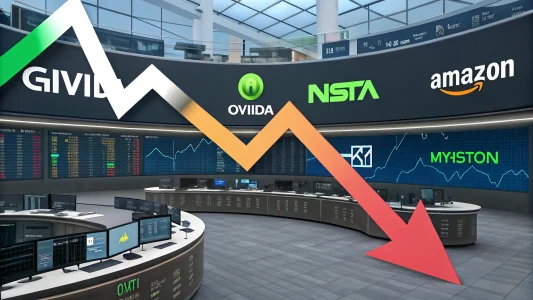Table of Contents
ToggleUnderstanding Bitcoin Beyond the Common Labels
Many investors and enthusiasts label Bitcoin as an “inflation hedge” or digital gold. However, my analysis shows that these labels do not capture the true nature of the asset. I pointed out that Bitcoin has repeatedly failed to live up to these claims, particularly during periods of high inflation or a strengthening dollar. For example, during the worst inflation year since 1980 in 2022, Bitcoin’s value dropped by 65%. Conversely, when the dollar performed strongly in 2024, Bitcoin soared by 121%. Such drastic fluctuations suggest that Bitcoin does not offer the stability that traditional hedges, such as gold, typically aim to provide.
The reality is that Bitcoin should be considered a high-risk asset. It behaves much like a leveraged version of major stock market indices, such as the Nasdaq or the S&P 500. This perspective calls for caution. Investors seeking safety during economic downturns may not find Bitcoin an ideal haven.
View this post on Instagram
Bitcoin’s Performance Compared to Traditional Assets
My analysis includes careful comparisons of Bitcoin to traditional hedging tools and investment indices. When examining inflation hedges such as gold, the trends diverge noticeably. At the April lows, while Bitcoin fell by 20% on a yearly basis, gold reached all-time highs. This divergence clearly shows that Bitcoin does not share the same investment profile as gold.
Additionally, Bitcoin’s behavior when compared to the US dollar further illustrates its volatility. Instead of serving as a US dollar hedge, Bitcoin has correlated more with growth indexes. The significant 121% increase in Bitcoin’s value in 2024, coinciding with the strong performance of the dollar, reinforces this point.
To sum up these key ideas:
- Inflation Hedge? Bitcoin declined sharply during periods of high inflation, raising questions about its role as an inflation hedge.
- US Dollar Hedge? Bitcoin’s performance contrasts with a strong dollar, indicating that it is not a reliable hedge against the dollar.
- Digital Gold?: Bitcoin failed to mimic gold’s success, especially when gold hit all-time highs while Bitcoin lagged.
- Risk Asset: Viewed as a leveraged version of the Nasdaq, Bitcoin’s behavior is much more volatile.
Examining the Dynamics of a Leveraged Asset
In recent assessments, I likened Bitcoin to the performance of stock market indices, particularly the Nasdaq. When stock markets soar, Bitcoin tends to follow with amplified gains. In contrast, during economic downturns or recessions, a similar pattern of significant declines in Bitcoin’s value can be expected. This kind of behavior makes Bitcoin a highly speculative investment.
Consider the annual returns from both Bitcoin and the Nasdaq index. Over various market cycles, Bitcoin’s returns tend to move in synchrony with the Nasdaq; however, the changes are much more intense in percentage terms. This high level of volatility not only positions Bitcoin as a non-traditional asset but also as one that carries enhanced risks, especially in a recession.
Bitcoin behaves as a leveraged asset, providing amplified gains in up markets and severe losses in downturns,” was a sentiment I shared during a recent discussion.
This quote captures the essence of Bitcoin’s risk profile. When stocks continue to rise, Bitcoin has experienced substantial gains. However, if the economy faces a recession, the losses for Bitcoin are expected to be magnified compared to traditional stock indices.
My Observations on Market Behavior
Reflecting on recent market cycles, I noted that Bitcoin’s performance is inconsistent with many of the myths surrounding it. It is neither a safeguard against inflation nor does it protect against a strong US dollar. Instead, it stands as an asset that benefits primarily from a bullish market sentiment. This insight calls for caution among investors eager to add Bitcoin to their portfolio simply under the guise of hedging against economic uncertainties.
The volatile swings in Bitcoin’s price should make any careful investor think twice. The idea of Bitcoin serving as a digital substitute for gold is appealing on paper, but it fails to hold up when examined against real market data. Investors should be aware that just because an asset has a high potential for returns does not mean it is a suitable risk mitigator during turbulent economic times.
Over the past few years, I have observed a significant increase in public interest in Bitcoin as a means to combat inflation or serve as an alternative to fiat currencies. However, historical performance suggests that these expectations might be misplaced. When speaking with clients and peers, I emphasize the importance of accurately understanding the risk profile and not being swayed by hype.
Evaluating Bitcoin’s Role in a Diversified Portfolio
For many investors, diversification across asset classes is a key investment principle. Bitcoin, with its very distinct volatility, plays a unique role. It should be seen as a speculative investment rather than a core holding intended to provide stability or protection against economic shocks. A diversified portfolio should be balanced with assets that counteract each other, and Bitcoin’s high-risk nature may not be suitable for all portfolios.
When weighing the pros and cons, it is clear that Bitcoin’s behavior mimics a leveraged version of key market indices. This means that in a strong economic environment, it can generate remarkable returns, but during periods of downturn, these same leverage effects can lead to significant losses.
Here are some considerations for investors:
- Risk Assessment: Understand that Bitcoin is a high-risk, high-volatility asset.
- Portfolio Balance: Utilize Bitcoin sparingly within a diversified portfolio centered on more stable assets.
- Market Trends: Monitor economic indicators and stock indices to gauge potential shifts in Bitcoin’s value.
Looking Ahead: Strategies for a Volatile Asset
There is much debate around Bitcoin’s long-term role in the financial markets. My observations point to the need for caution. Recognizing Bitcoin’s amplified movements can help investors prepare for both extreme gains and severe losses. Adopting a thoughtful strategy when incorporating such an asset in an investment portfolio is necessary.
If the broader stock market, particularly indices such as the Nasdaq, continues its upward trend, Bitcoin may follow suit. However, the reverse is equally concerning during market downturns. Investors must consider these dynamics when making decisions.
I encourage investors to frequently reassess their portfolios and consider the high-risk nature of assets like Bitcoin. While the prospect of high returns is attractive, it is important to balance this with the possibility of significant losses, especially during uncertain economic times.
As a final reflection on Bitcoin’s role, if you expect a strong economic or market environment, Bitcoin might perform spectacularly. If recession fears grow or economic indicators turn negative, the risk is significantly higher. The ability to monitor these trends is crucial for preserving capital during downturns.
Final Thoughts
In my view, Bitcoin serves as a risky, leveraged asset rather than a reliable hedge against inflation or a strong dollar. The asset’s performance, particularly the stark contrasts observed in 2022 and 2024, highlights its susceptibility to market fluctuations. It is not a substitute for safe-haven assets like gold, nor a protective tool against currency devaluation.
For both investors and enthusiasts, it is essential to approach Bitcoin with a clear understanding. I recommend that anyone considering Bitcoin as part of their investment strategy fully understand these risks. Diversification and a careful review of one’s risk tolerance are important steps. The decision to allocate funds to Bitcoin should be based on an appreciation of its high-risk nature rather than expectations of steady performance in turbulent times.
These observations serve as a reminder to all those closely watching financial markets: the excitement surrounding an asset does not guarantee its suitability as a safe or stable investment. Thoughtful analysis and a measured approach are essential for navigating such volatile assets.

















